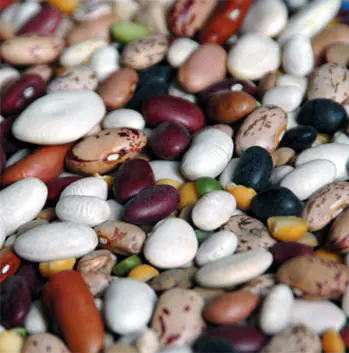Bean diet: how to lose weight and improve health
Legumes are an excellent source of protein and many other nutrients that are essential to staying healthy and fit. The Bean Diet is a legume-based diet that can help you lose weight and improve your health. In this article, we will look at the basic principles of the bean diet, its advantages and disadvantages, and provide a weekly menu to help you follow the diet.
Principles of the Bean Diet
The legume diet is based on eating legumes such as beans, lentils and green peas. These foods are rich in protein, complex carbohydrates, fiber, iron, potassium, calcium and phosphorus. Legumes also contain less fat than many other foods, making them an ideal choice for those looking to lose weight.
With a legume diet, it is necessary to completely exclude culinary and flour products, fatty foods, as well as sugar and starch from the diet. Instead, you should eat legumes to replace sugar and starch. In addition, the diet should include plenty of raw vegetables and still water. Coffee and tea are allowed, but without added sugar. Before going to bed, it is recommended to drink a glass of low-fat cottage cheese to ease digestion.
Benefits of the Bean Diet
The bean diet has several benefits. Firstly, it helps you lose excess weight. Legumes are rich in protein and complex carbohydrates, which take longer to break down and provide a long-lasting feeling of fullness. Additionally, legumes are low in fat, making them an ideal choice for those looking to lose weight.
Secondly, the bean diet is rich in nutrients. Legumes contain a lot of protein, fiber, iron, potassium, calcium and phosphorus, which are essential for health and normal functioning of the body.
Third, legumes are cheap and easily available. They can be prepared in a variety of ways, making them very versatile foods.
Disadvantages of the Bean Diet
Despite all the benefits, the bean diet also has several disadvantages. First, it can upset the digestive system in people with sensitive stomachs or digestive problems.
Second, legumes can cause gas and bloating in some people, which can be unpleasant. To reduce this effect, it is recommended to gradually add legumes to your diet, starting with small portions and increasing them gradually.
Finally, a legume diet may not be varied enough and boring if you don't find different ways to prepare legume dishes. Therefore, it is important to experiment with different recipes to make your diet more varied and interesting.
Weekly bean diet menu
Here is an example of a weekly bean diet menu that will help you follow your diet and lose weight:
Monday:
Breakfast: two-egg omelette with beans and tomatoes.
Lunch: salad of lentils, cucumbers and lettuce.
Dinner: Grilled turkey with green peas and broccoli.
Tuesday:
Breakfast: two-egg omelette with red pepper and lentils.
Lunch: salad of beans, cucumbers and lettuce.
Dinner: beef stew with green peas and carrots.
Wednesday:
Breakfast: two-egg omelette with beans and sesame seeds.
Lunch: salad of lentils, tomatoes and lettuce.
Dinner: Grilled chicken with green peas and cabbage.
Thursday:
Breakfast: two-egg omelette with lentils and spinach.
Lunch: salad of beans, cucumbers and lettuce.
Dinner: grilled fish with green peas and asparagus.
Friday:
Breakfast: two-egg omelette with beans and green onions.
Lunch: salad of lentils, tomatoes and lettuce.
Dinner: grilled beef with green peas and eggplant.
Saturday:
Breakfast: two-egg omelette with lentils and cucumbers.
Lunch: salad of beans, tomatoes and lettuce.
Dinner: Grilled pork with green peas and zucchini.
Sunday:
Breakfast: two-egg omelet with beans and pepper.
Lunch: lentil salad,



